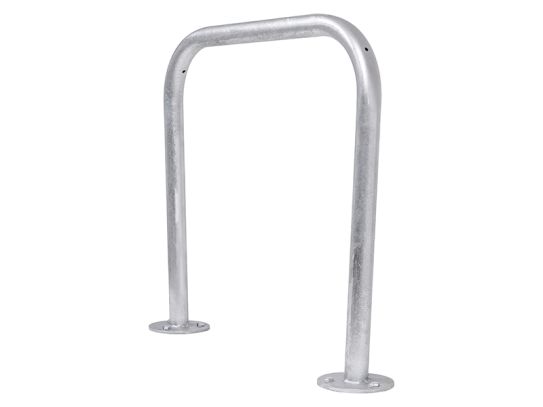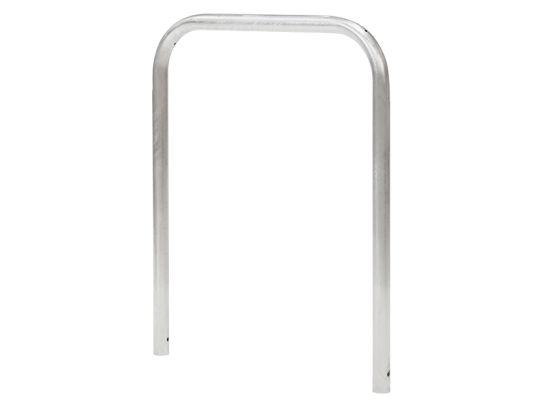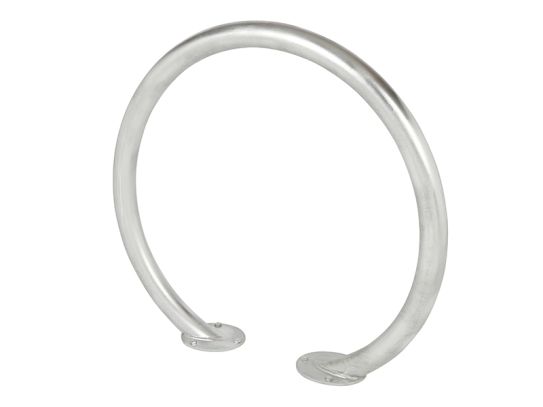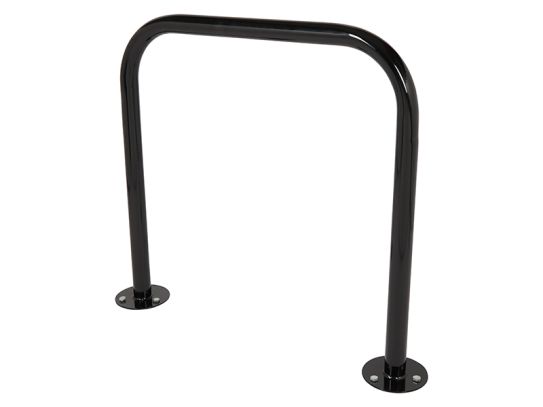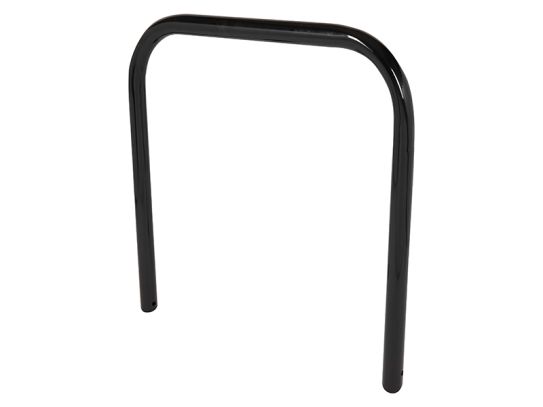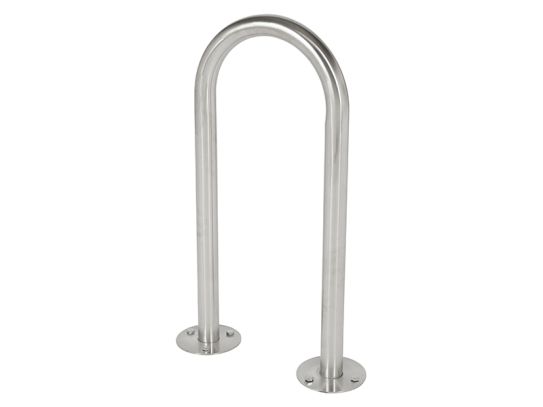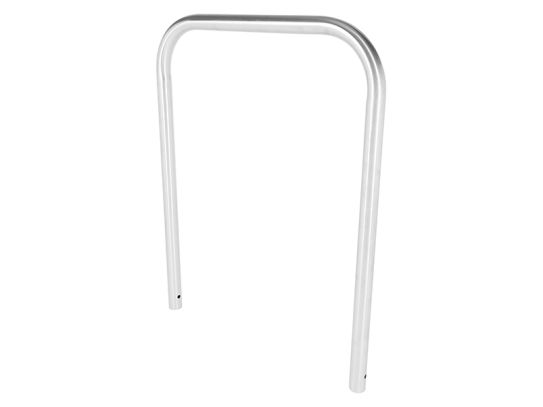Bike Racks
Ride Easy Knowing Your Bike Is Safe With Us
Looking for a secure and durable place to park your bike? Look no further! Our range of metal outdoor bike racks has you covered. With options for bolting to the ground, setting in concrete, and attaching to walls, you can choose the best fit for your needs.
Our Sheffield cycle stands are perfect for use in workplaces, schools, and shopping centres. Trust in our top-quality products to keep your bike safe and ready for your next ride. Don't let limited parking space be a hindrance to your cycling routine - invest in one of our sturdy bike racks today!
What Are Bike Racks?
Bike racks are structures or devices that are used to hold and secure bicycles. They can be found in a variety of locations, including public areas, parking lots, and residential properties. Bike racks come in a variety of styles and designs, and can be used to park a single bike or multiple bikes. Some common types of bike racks include:
- Wall-mounted racks: These are racks that are attached to a wall or other vertical surface. They can hold one or more bikes, depending on the size of the rack.
- Ground-mounted racks: These are racks that are mounted on the ground and are typically secured with bolts or set in concrete. They can also hold one or more bikes.
- Sheffield stands: These are racks that consist of a single upright post with a horizontal bar for the bike's front wheel to rest on. They are named after the city of Sheffield in the UK, where they were first developed.
- Storage racks: These are racks that are used to store bikes indoors, often in a garage or basement. They can be freestanding or mounted to a wall or ceiling.
What Are Some Common Uses for Bike Racks?
Bike racks are commonly used in a variety of settings, including:
- Public areas: Bike racks are often found in public places such as parks, streets, and downtown areas. They provide a convenient and secure place for people to park their bikes while they go about their day.
- Car Parks: Many car parks, including those at workplaces and shopping centres, have bike racks to encourage cycling as a mode of transportation.
- Residential properties: Bike racks can be used to store bikes on residential properties, including single-family homes, apartments, and condominiums. They can be used in garages, basements, or outside.
- Transportation hubs: Bike racks are also commonly found at transportation hubs such as train stations, bus stations, and airports. They provide a convenient place for people to park their bikes while they travel.
- Schools: Bike racks are often found at schools to encourage students to ride their bikes to school and promote healthy habits.
What Are the Different Types of Bike Racks?
There are many different types of bike racks, and the best type for you will depend on your needs and preferences. Some common types of bike racks include:
- Wall-mounted racks: These are racks that are attached to a wall or other vertical surface. They can hold one or more bikes, depending on the size of the rack. Wall-mounted racks are a good choice for people who have limited space and need to store their bike in a small area.
- Ground-mounted racks: These are racks that are mounted on the ground and are typically secured with bolts or set in concrete. They can also hold one or more bikes. Ground-mounted racks are a good choice for people who have more space and want a more permanent solution for bike storage.
- Sheffield stands: These are racks that consist of a single upright post with a horizontal bar for the bike's front wheel to rest on. They are named after the city of Sheffield in the UK, where they were first developed. Sheffield stands are a good choice for people who need a compact and lightweight bike rack.
- Storage racks: These are racks that are used to store bikes indoors, often in a garage or basement. They can be freestanding or mounted to a wall or ceiling. Storage racks are a good choice for people who want to store their bike inside to protect it from the elements.
There are many other types of bike racks available, and you can choose the best one for your needs based on factors such as the number of bikes you need to store, the available space, and your budget.
What Are the Key Features to Consider When Choosing Bike Racks?
When choosing bike racks, there are several key features to consider:
- Capacity: How many bikes do you need to store? Make sure to choose a bike rack with enough capacity to hold all of your bikes.
- Material: Bike racks are made from a variety of materials, including steel, aluminium, and plastic. Consider the material of the bike rack to ensure it is durable and able to withstand the elements.
- Security: If you are concerned about bike theft, look for a bike rack with additional security features such as lockable arms or a built-in lock.
- Ease of use: Consider how easy it is to use the bike rack. Can you easily load and unload your bike? Are the arms or other holding devices easy to use?
- Location: Think about where you will be using the bike rack. If it will be outside, make sure it is able to withstand the elements. If it will be inside, make sure it fits in the available space.
- Cost: Bike racks vary in price, so consider your budget when making your decision.
What Materials Are Bike Racks Made From?
Bike racks are made from a variety of materials, including:
- Steel: Steel is a strong and durable material that is commonly used to make bike racks. It is resistant to damage and can withstand the elements, but it is also heavy and may be more expensive than other materials.
- Aluminium: Aluminium is a lightweight and corrosion-resistant material that is often used to make bike racks. It is less durable than steel, but it is also less expensive and easier to move.
How Do You Maintain and Clean Bike Racks?
To maintain and clean bike racks, follow these steps:
- Inspect the bike rack regularly for any signs of wear or damage, such as loose bolts or bent parts. Tighten any loose bolts or screws as needed, and replace any damaged parts.
- Remove any dirt, debris, or rust from the bike rack using a soft brush or cloth. For tougher dirt or rust, you may need to use a mild detergent or rust remover.
- If the bike rack is located outside, consider applying a rust inhibitor or other protective coating to help prevent rust and extend the life of the rack. Follow the manufacturer's recommendations for the type of coating to use.
- If the bike rack is located indoors, consider wiping it down with a damp cloth or mild cleaner to remove any dust or grime.
By regularly inspecting and cleaning your bike rack, you can help ensure that it stays in good condition and continues to function properly.
What Safety Considerations Should Be Taken Into Account When Using Bike Racks?
When using bike racks, there are several safety considerations to keep in mind:
- Make sure the bike rack is securely installed and in good condition. If the bike rack is loose or damaged, it may not be able to hold your bike properly, which could result in an accident or injury.
- Use a lock or other security measures to secure your bike to the bike rack. This will help prevent bike theft and ensure that your bike stays in place while you are away.
- Follow the manufacturer's instructions for using the bike rack. Make sure to properly load and unload your bike onto the rack to avoid accidents or injuries.
- Pay attention to your surroundings when using a bike rack. Make sure the area is clear of any hazards or obstacles that could cause an accident.
- If you are using a hitch-mounted bike rack, make sure to properly secure the rack to your vehicle and secure your bike to the rack. Follow the manufacturer's instructions for proper installation and use.
By following these safety tips, you can help ensure a safe and enjoyable cycling experience.
Are There Any UK or European Industry Standards or Regulations That Apply to Bike Racks?
There are several industry standards and regulations that apply to bike racks in the UK and Europe. These standards help ensure that bike racks are safe and fit for their intended use.
- In the UK, the main standard for bike racks is British Standard BS EN 14872:2006, which sets out the requirements and test methods for bike racks. This standard covers the stability, strength, corrosion resistance, and other properties of bike racks.
- In Europe, the main standard for bike racks is European Standard EN 14730:2006, which sets out the requirements and test methods for bike racks. This standard covers the stability, strength, corrosion resistance, and other properties of bike racks, and is harmonised with the UK standard.
- In addition to these standards, bike racks may also be subject to other regulations, such as building codes or planning regulations. It is important to check with the relevant authorities to ensure that your bike rack meets all necessary regulations.
Overall, following these industry standards and regulations can help ensure that your bike rack is safe and fit for its intended use.
